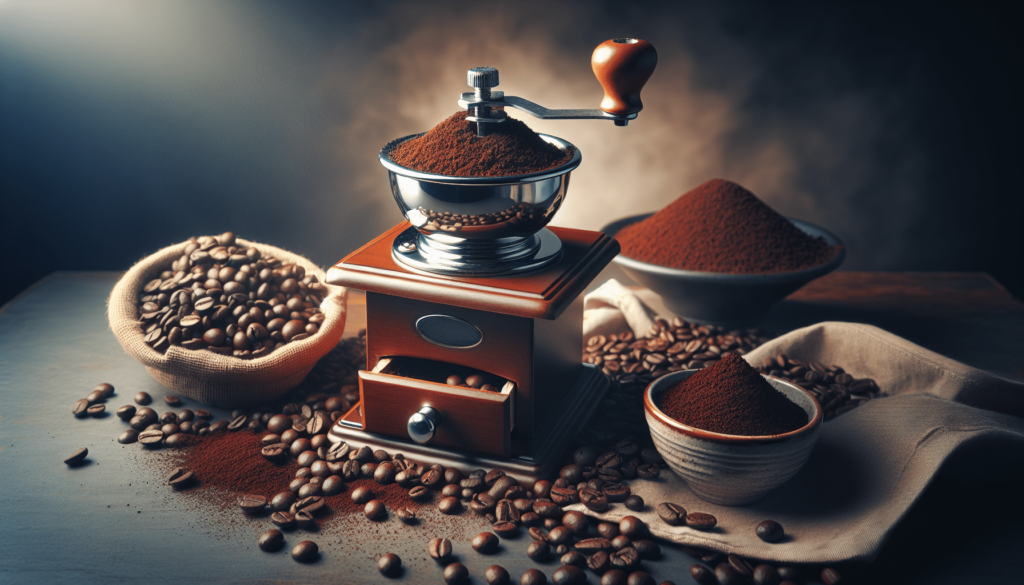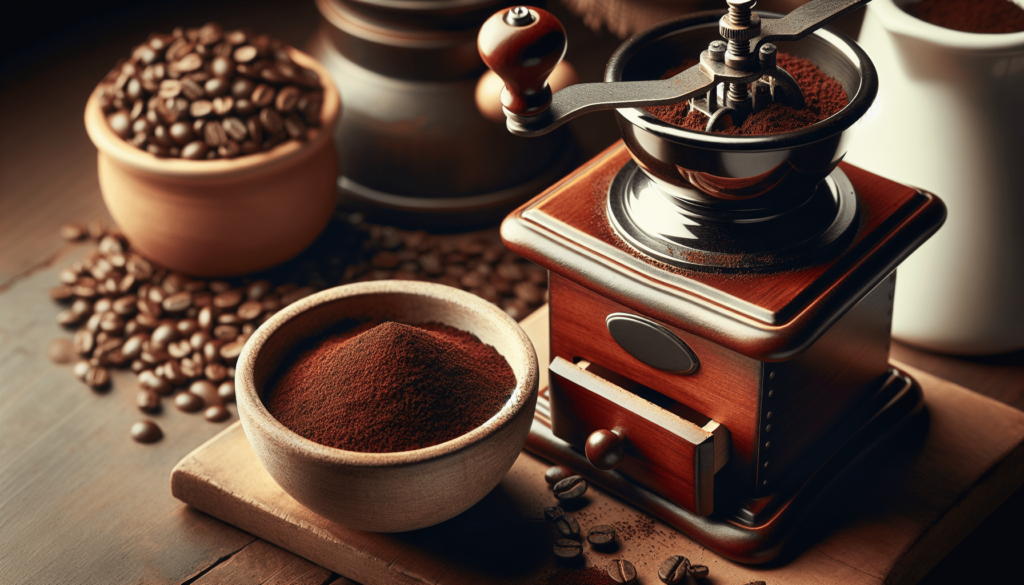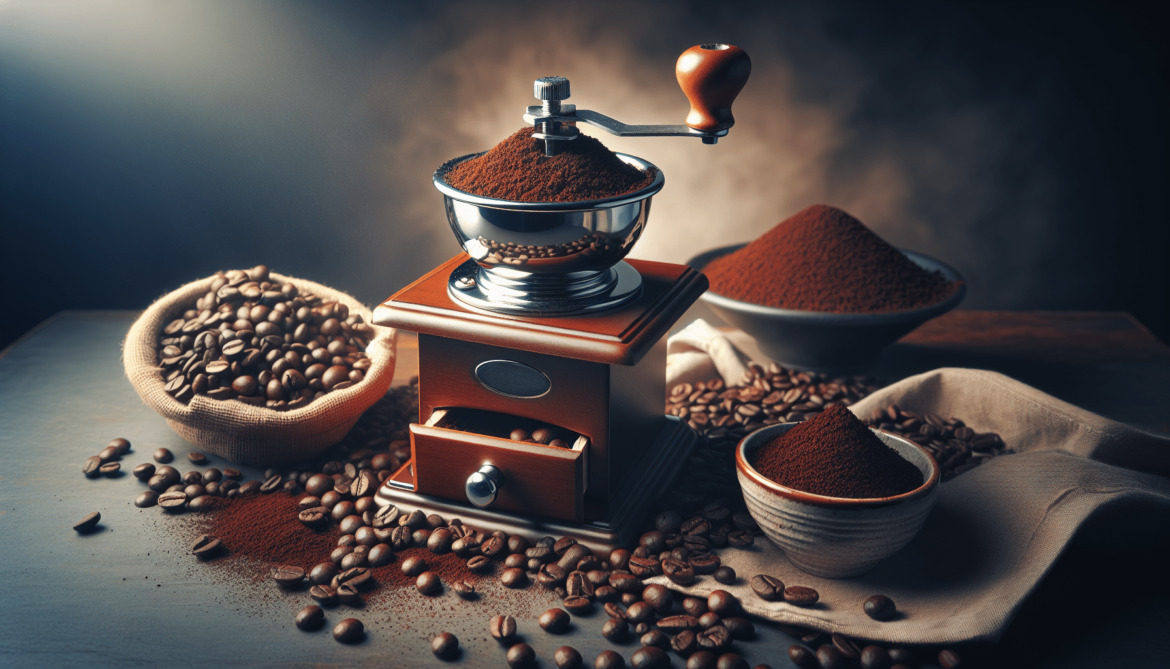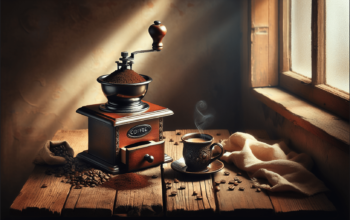Have you ever wondered why your coffee sometimes tastes incredible and other times just falls flat? One of the key factors that can make or break your cup of joe is the grind size of your coffee beans. Understanding how the grind size affects brewing can take your coffee game to a whole new level.
The Basics of Coffee Grind Size
Before jumping into the specifics, it’s essential to have a solid understanding of what coffee grind size means. Essentially, grind size refers to the coarseness or fineness of your coffee beans after they’ve been ground. The size can significantly impact the extraction process during brewing, which in turn affects the flavor, aroma, and overall quality of your coffee.
Why Grind Size Matters
The grind size matters because it influences the surface area of the coffee beans that interacts with water during brewing. A finer grind exposes more surface area, leading to faster extraction. Conversely, a coarser grind offers less surface area, resulting in slower extraction. This relationship is crucial for achieving the perfect balance of flavors in your coffee.
Understanding Coffee Extraction
Extraction is the process where water dissolves soluble compounds in coffee grounds. The goal is to extract the right flavors without pulling out undesirable bitter compounds. If your grind size is too fine for the brewing method you’re using, you may end up over-extracting, resulting in bitterness. On the other hand, if your grind size is too coarse, you risk under-extraction, leading to weak and sour flavors.
Different Brewing Methods and Their Ideal Grind Sizes
Each brewing method has an ideal grind size that maximizes flavor extraction. Here’s a breakdown of several popular methods and their corresponding grind sizes:
1. French Press
- Ideal Grind Size: Coarse
- Explanation: The coarser grind is essential here because the French Press steeps coffee in hot water for several minutes. This long contact time means that a fine grind can quickly lead to over-extraction.
2. Pour-Over
- Ideal Grind Size: Medium-fine
- Explanation: The pour-over method allows for precise control over the brewing time, making a medium-fine grind ideal. This size strikes a balance between sufficient extraction and avoiding bitterness, resulting in a clean and flavorful cup.
3. Espresso
- Ideal Grind Size: Fine
- Explanation: Espresso requires a fine grind because the brewing process involves forcing hot water through the coffee grounds under pressure. The fine size facilitates quick extraction, which results in a rich and intense flavor.
4. Cold Brew
- Ideal Grind Size: Coarse
- Explanation: Cold brew coffee is steeped in cold water for an extended period (usually 12 to 24 hours). A coarse grind prevents over-extraction and results in a smooth, mellow flavor that many enjoy.
5. AeroPress
- Ideal Grind Size: Medium to Medium-Fine
- Explanation: The AeroPress is versatile, allowing you to experiment with grind sizes. A medium to medium-fine grind works well, as it provides a good balance of extraction time and flavor.
Below is a summary table to make it even easier for you to see which grind size works best for each brewing method.
| Brewing Method | Ideal Grind Size |
|---|---|
| French Press | Coarse |
| Pour-Over | Medium-Fine |
| Espresso | Fine |
| Cold Brew | Coarse |
| AeroPress | Medium-Medium Fine |

The Role of Freshness
Have you ever heard that freshly ground coffee tastes better? There’s a reason for that! Freshness not only impacts the grind size but also the overall taste and aroma of your coffee.
Why Freshly Ground Coffee is Superior
When coffee beans are ground, they start to oxidize, causing the flavors and aromas to diminish over time. Grinding your beans just before brewing locks in those fresh flavors. The grind size significantly impacts how quickly the beans can oxidize. Finer grinds expose more surface area, which leads to faster oxidation. For the freshest flavor, aim to grind your beans just before you brew.
Understanding the Different Coffee Grinders
The type of grinder you use can also affect the consistency of your grind size. There’s a variety of grinders available, and choosing the right one can make a world of difference.
Blade Grinders
Blade grinders use a spinning blade to chop beans. While they are often the most affordable option, the grind size can be inconsistent. This inconsistency can lead to uneven extraction and affect the overall flavor profile of your coffee.
Burr Grinders
Burr grinders feature two revolving abrasive surfaces that crush the beans, allowing for a more uniform grind size. They typically produce a consistent grind, which helps in achieving even extraction. While they may require a more significant investment, the quality of coffee they produce is often worth it.
Manual vs. Electric Grinders
You’ll find both manual and electric burr grinders on the market. Manual grinders are often portable and can be a great option for those who enjoy the ritual of grinding their coffee. Electric grinders are quicker and typically easier to use, making them suitable for busy mornings.
Below is a comparison table to help you choose the right grinder for your coffee needs.
| Grinder Type | Pros | Cons |
|---|---|---|
| Blade Grinder | Affordable, easy to use | Inconsistent grind size |
| Burr Grinder | Consistent grind, better flavor | More expensive |
| Manual Burr Grinder | Portable, hands-on experience | Requires effort, slower |
| Electric Burr Grinder | Quick, easier for daily use | Can be bulky and more costly |

Adjusting Grind Size for Taste Preferences
The beauty of coffee brewing lies in the ability to adjust parameters to suit your taste preferences. If you find your coffee too bitter or too weak, tweaking the grind size can be an effective solution.
If Your Coffee Tastes Bitter
- Adjust the Grind: Go coarser. This change reduces the extraction rate, which can help minimize bitterness.
- Consider Brewing Time: Shorten the brewing time to prevent pulling out undesired bitter flavors.
If Your Coffee Tastes Weak or Sour
- Adjust the Grind: Try a finer grind. This adjustment increases the extraction, allowing for more robust flavors to emerge.
- Consider Brewing Time: Lengthen the brewing time to allow more flavor compounds to dissolve.
Experimenting with Grind Size
Experimentation is key to finding your perfect cup of coffee. Don’t hesitate to play around with the grind size, brewing time, and even water temperature to discover what suits your palate best. Keeping a coffee journal can help you track changes and their outcomes, allowing you to refine your technique over time.
Timing Your Grind and Brew
Consider how long you plan to brew your coffee. The longer the brewing time, the coarser the grind you may want to use. Conversely, for quick brews like espresso, a fine grind will be necessary.
Common Myths About Coffee Grind Size
There are quite a few misconceptions about coffee grind size that can lead to confusion. Let’s clear some of them up.
Myth 1: Finer Means Better Coffee
While a fine grind is essential for espresso, that doesn’t mean finer is always better. Each brewing method requires a different grind size for optimal flavor extraction.
Myth 2: All Coffee Grinder Brands Are the Same
Not all grinders are created equal. Investing in a good quality burr grinder can make a significant difference in the consistency of your grind size, impacting the flavor of your coffee.
Myth 3: You Can Use Any Grind for Any Brewing Method
Each brewing method benefits from a specific grind size. Using the wrong grind can lead to disappointing results, making it essential to match the grind size to your brewing method.
Conclusion
Grind size is a crucial but often overlooked element in brewing the perfect cup of coffee. By understanding how grind size interacts with various brewing methods, freshness, and grinder types, you can significantly enhance your coffee experience. So, the next time you reach for those coffee beans, take a moment to consider how the grind size could elevate your brew. Happy brewing!


